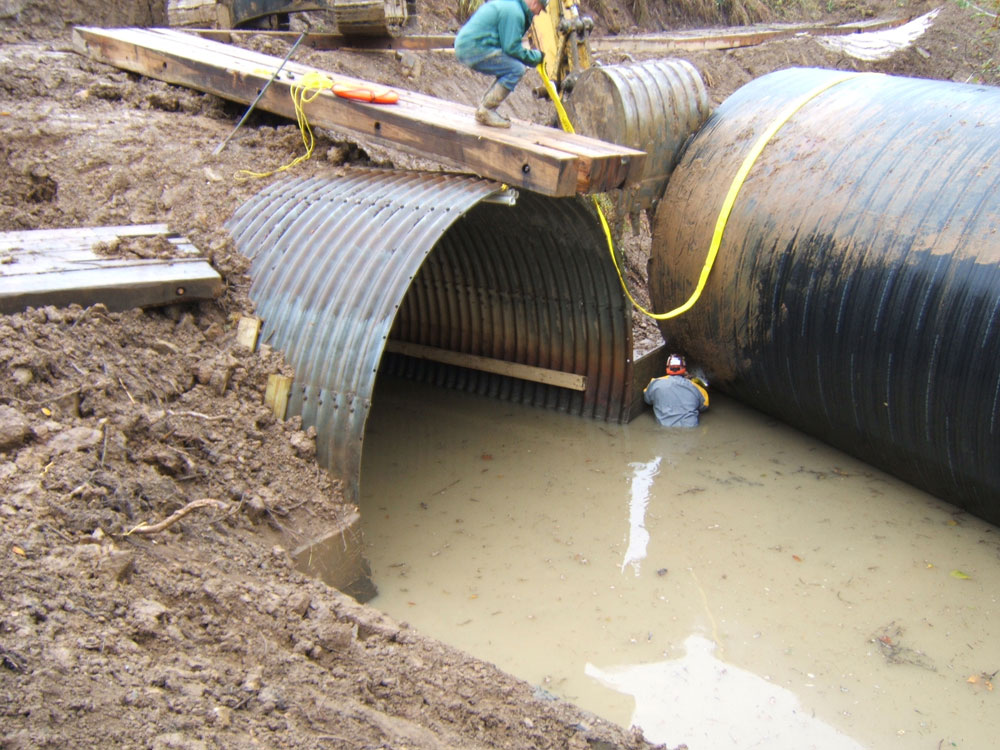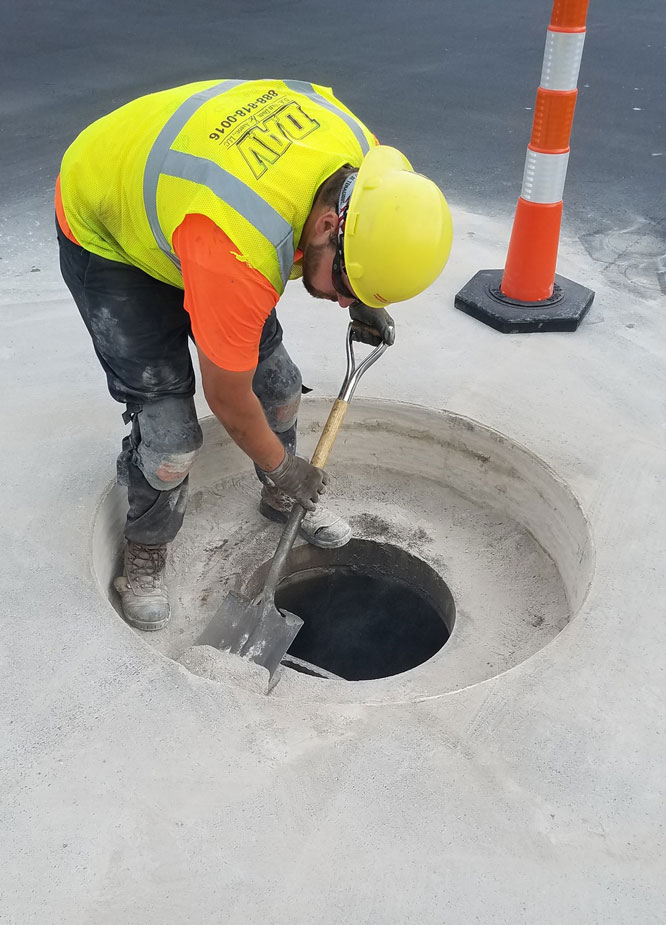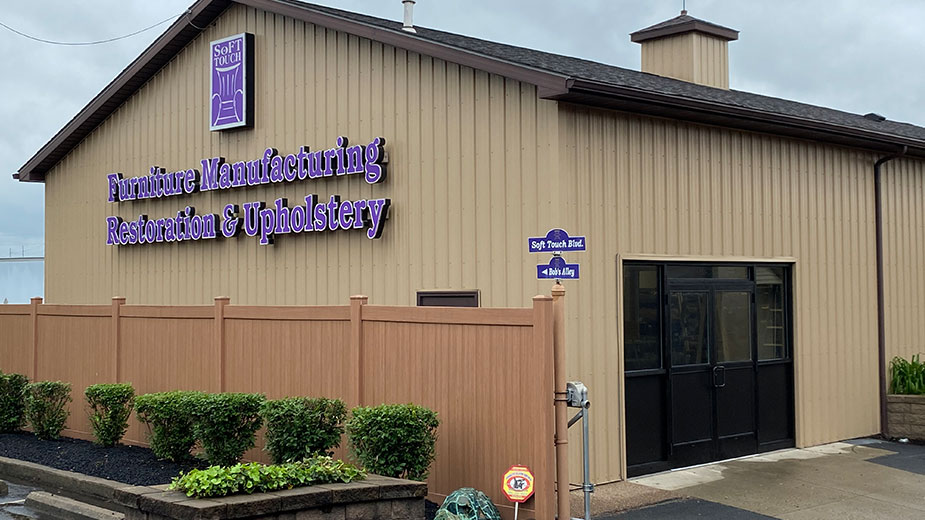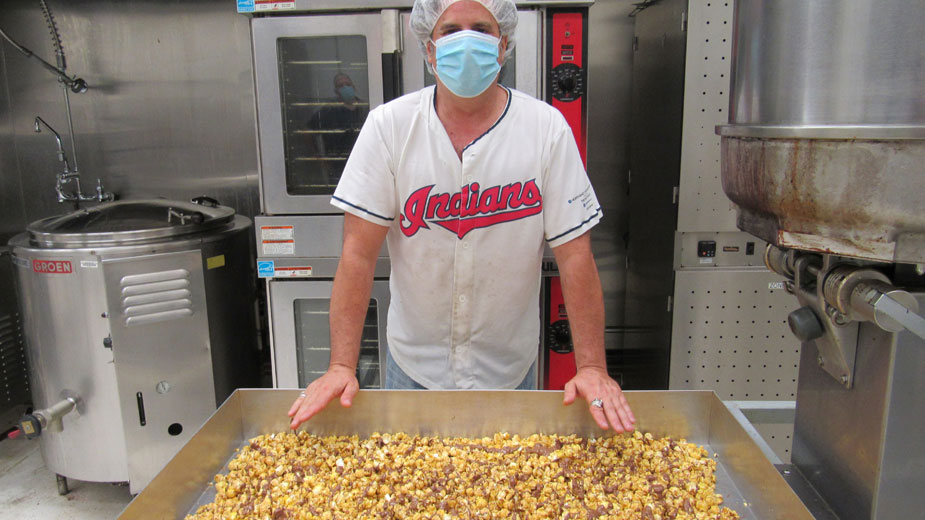D.A. Van Dam Finds Growth Underground
HUBBARD, Ohio — One might not expect a statewide construction company to be found operating out of a small office above a horse barn. But D.A. Van Dam & Associates is doing just that and its management has plans to take the its products nationwide.
To get there, owner and CEO Cissy Van Dam looks to leverage her company’s years of experience in underground-infrastructure repair work, she says, specifically culvert linings and manhole castings.
Founded in 1970 by her late husband, Dan Van Dam, D.A. Van Dam & Associates began as a sales representative for an Ohio-based PVC piping company. When that company was bought out, D.A. Van Dam went independent and evolved into a PVC plumbing wholesaler that serves municipalities in Ohio, western Pennsylvania, Michigan, Indiana, Kentucky and West Virginia.
While Cissy Van Dam worked to add product lines, Dan Van Dam worked closely with engineers on their projects. This resulted in the company earning detailed specification work that gave it a reputation as the “go-to firm” for projects using PVC piping, she says.
“We then started to see a trend toward doing rehabilitation,” she says. “Many of the utilities’ equipment was starting to fail. As a small business, you always have to keep looking for the next thing.”

The company started to research underground-infrastructure repair projects, particularly manhole linings, she says. It also took on construction work, opting to work directly with the contractors. When the contractors began substituting D.A. Van Dam’s products for others, the company started doing its own installations to keep control of the products being used.
That was about 12 years ago, Van Dam says. Today the company specializes in “no dig” underground rehabilitation of culvert linings and manhole castings, which prevents disrupting the neighborhoods and doesn’t affect traffic, she says. Culvert lining work gets the company inside the transportation industry, because every half-mile under the large highway systems is a culvert, she says.
“They’ve all reached the end of their useful life,” she says. “They’ve all had 50 years’ time and by accounting services, those are now deteriorated and need to be replaced.”

D.A. Van Dam’s culvert work gained the company a 15-year relationship with Ohio. As the fourth-largest state in the nation for transportation and federal dollars, Ohio is “very aggressive” in keeping up with its highway system, Van Dam says.
Manhole castings doubled the annual revenues of the company and drew the attention of large asphalt contractors, she notes.
While researching business niches, she noticed a trend where the federal government requires a larger percentage of minority workers on a job, she says.
Minorities can include a Disadvantaged Business Enterprise, or DBE, or a Women Business Enterprise, or WBE. In the late 1990s, those requirements were 2% of a job, she says. “Now, we’re seeing them as high as 12% of a job.”

To take advantage of that, she founded Underground Rehab Solutions in July 2017 and started applying for the certifications. Plans changed when Dan Van Dam died that December, leaving D.A. Van Dam & Associates to Cissy. She switched her efforts to attain the certifications to her family’s company. One thing she didn’t count on was the amount of time it takes to become certified.
“It’s not fill-out-the-paperwork like a credit app,” she says. “It takes a great deal of time. I’m still working on getting my certifications.”
Van Dam believes the certifications paired with the company’s experience in heavy-highway construction work will be a benefit as the design-build companies that are eyeing $60 million to $70 million jobs will need experienced DBE contractors for 12% of the work, she says.
“They have to find a contractor who can do it and there are not that many DBE contractors in the heavy-highway sector that do the actual work,” she says. “So, that’s where my growth is, I hope.”
D.A. Van Dam employs four office workers and four on its construction team. As a union contractor, it pulls workers from union halls when needed. It works predominantly in Ohio, but because the DBE and WBE certifications are federal, they will enable Van Dam to get work in any other state.
“I’ve already been approached by contractors in Michigan who have projects on the books,” she says. “My workers will travel. We’re hopefully going to be able to travel into some of the warmer climates so we can work a little bit longer because, of course, we get cut out here with all of the weather.”
For now, Van Dam continues to learn to run the business her husband left her. She’s enrolled in the Emerging Leaders training program conducted by the Small Business Administration at Youngstown State University as well as classes with the Turner Construction School of Management, which includes a 12-week course on insurance, bidding, estimates and safety regulations.
And she is a member of the National Association of Women in Construction. “I’m looking forward to getting more involved with that and partnering with members on some of the contracts,” she says.
She’s also preparing the next generation. Dan’s son, Steve Belus, and his wife, Danielle, are supervisor/project manager and director, respectively. Danielle Belus worked part-time at the company until Dan, her father-in-law, died, then came on full-time and handles financials, bidding and tracking projects.
“He loved when we were all here together working for him,” Belus says. “This was his legacy. I think Cissy is doing everything she can to pass that on to me and Steve.”
As for the future, Van Dam continues to keep her eyes open for new niches the company can fill, she says. In the next five to 10 years, she wants D.A. Van Dam & Associates to be a $3-million to $5-million company.
“Whether we will get to there or not – who knows? But it’s going to be a fun trip along the way to try and get it done,” she says.
Pictured above: Photo taken of a worker from inside a culvert pipe.
Copyright 2024 The Business Journal, Youngstown, Ohio.



